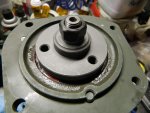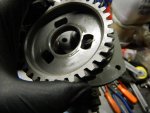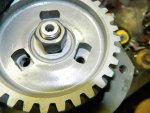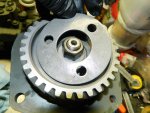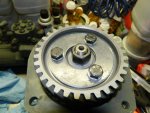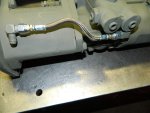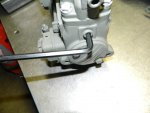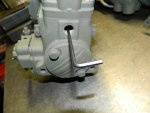Now I' even more confused:
The droop screw, which can only rest against the stop plate, and keep the fulcrum lever from moving further towards the ''increase fuel'' position, does two things that are exactly the opposite?:
(Floridianson)
Makes sense:
The pressure inside the FDC only changes when a different fuel is used.
The pressure inside the FDC is the same regardless of engine speed, and does not change during engine operation.
How can the stop plate move during operation? And how would movement of the stop plate cause surging?
This already is my understanding of the droop screw's, and governor's, function. It is, basically, what i learned back when I was an apprentice at M.A.N.
Thanks. I'll see if I can access the manual at work.



